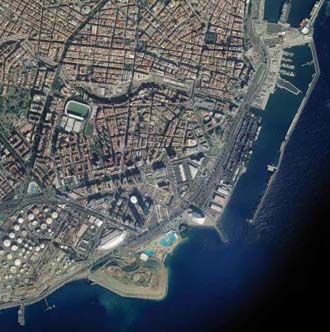
Economy
The economy of Tenerife, predominantly based on agriculture and trade until the 1970s, is now focused on the service industry – mainly tourism – which has promoted construction and services linked to tourism activity. Industry is scarce, representing about 7 or 8 % of GDP, mainly in agriculture and food sectors, tobacco, and oil refinery (at the oil refinery in Santa Cruz de Tenerife).
With regard to the primary sector, only 10% of the surface area of the island is cultivated – mainly drier lands (vines and potatoes), with a small proportion of irrigated land (mostly dedicated to banana and tomato crops). Export agriculture is targeted at trade with national markets and the European Union. The island has also started to export other tropical fruits (avocado, pineapple, mango, and other greenhouse crops) and flowers. Livestock mainly comprises goats and cows and is scarce, having suffered a significant recession in recent decades.
Demographics
The limited nature of this island territory and the great economic growth experienced by Tenerife in recent years are the factors which determine the island's demographics, which are also quite specific. The territory provides a home for more than 800,000 inhabitants, and boasts two of the three cities of the Canary Islands with more than 100,000 inhabitants, Santa Cruz and La Laguna, Arona, with a population of over 70,000, and Adeje, both in the touristic south of the island and showing an annual population growth of more than 13%. As one of the Canary Islands' capital cities, it experiences high rises in its population density. The coast and surrounding areas are the most densely inhabited zones.
Population growth in Tenerife has depended more on external flows of incomers than on natural growth, although the latter is still higher than the national average. These flows are, to a large extent, due to the circulation of people born in European Union states and other Autonomous Communities of Spain. Immigration, considered to be the influx of people from other countries, has also been an important factor affecting population growth, in particular immigration from Latin America.


 Print
Print